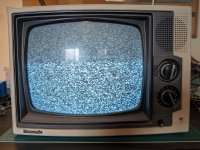In Europe it's bit different, lots of countries have national TV station that's a state run agency. Moving that out of the air implies that state should now own or have right on new delivery infrastructure too.
What I hate about ours, apart from the fact that a state TV will always be a tool of the government, they run commercials and they ask for monthly tax. And the quality of programme is diminishing. In mid 2000s all major sports were free to air here, domestic football league, derbies from "big 5" or euro football, UEFA leagues, Formula 1, NBA...people would wake up at 4 am, turn on the TV and watch Bulls in their heyday for instance. I remember mid 90s, going to bed before school, turning off computer, turning on the TV channel 2. Seinfeld, Voyager, Northern Exposure, every night from Monday to Friday, with a minute of commercials in between shows.
Now you have to pay for essentially nothing, two/three OK talk shows weekly, dumb "The Voice" type entertainment, and a single league or Euro match they negotiated from private providers. And gambling/sports betting ads, they are everywhere.

